 Whatever the setting, be it in the workplace, general society or indeed sport, one of the fiercest subjects of debate is that of gender discrimination and specifically ensuring that equal opportunities exist for women. It can be a thorny subject for sure, but one in which progress is seemingly being made, with women finding themselves on increasingly level ground in many areas of the world. In many cultures and settings, women are able to contend directly, and fairly, with men for many of the top jobs in business and other fields.
Whatever the setting, be it in the workplace, general society or indeed sport, one of the fiercest subjects of debate is that of gender discrimination and specifically ensuring that equal opportunities exist for women. It can be a thorny subject for sure, but one in which progress is seemingly being made, with women finding themselves on increasingly level ground in many areas of the world. In many cultures and settings, women are able to contend directly, and fairly, with men for many of the top jobs in business and other fields.
But, what about sport? Are men and women able to compete on an even footing in the sporting world? Much of the time the answer to this question is that no, they are not. A fact that sets sport aside from other areas, for example achieving success within the realms of business or music. There are, however, sound reasons why sport is different… or at least most sports.
For whilst there is undoubtedly a mental element to sporting competition, there is also significant importance placed upon physical attributes. One of the simple facts of life is that, on average, males are both stronger and quicker than females – a statement easily confirmed by a look through the world records in track and field, with the figures recorded by male athletes being significantly better than the women’s marks for every event; generally coming in at around 10% quicker for speed-based contests, with the difference increasing significantly in the strength disciplines.
With this in mind, and with men also being generally taller and heavier than females, what has followed in the vast majority of sports is a segregation of the sexes, with men competing against men, and women competing against women. If the aims are to maximise competitiveness and the enjoyment of both participants and spectators, this appears to be the most sensible arrangement and one which is generally accepted, at least by most people.
Man Versus Woman: Sporting Exceptions

As with all general rules though, there are, of course, exceptions. Whilst it would certainly be unreasonable to expect women to compete against men in elite level rugby, weightlifting or soccer, for example, there are other sporting pursuits where the physical differences between men and women are not deemed to have a discernible impact on the result.
Many may point to the mixed variants which exist within a number of sports, for instance mixed doubles in tennis or badminton, or the pairs events in figure skating, as examples of men and women competing together. However, these are all sports where males are accepted to hold an advantage, with the balance being achieved through having a member of each sex on both sides. Sports that allow a direct man versus woman battle are a little harder to find, but they do exist.
Snooker
Snooker is one such activity in which men and women are permitted to play professionally against one another – although only one woman has ever competed on the tour for a whole year. Whilst the exploits of Fallon Sherrock have done a lot to further the cause of what should be a relatively level playing field in the world of darts.
Horse Racing
There are a few other examples, including motorbike racing, but the broadest range of events falls under the equestrian umbrella, including eventing, dressage, showjumping and, of course, horse racing. Happily, a staple occurrence in modern racing, the sight of men and women competing alongside one another hasn’t always been so common, with the journey of women within the racing world being far from straightforward – and it is a journey which may well have a few twists and turns still to come.
Women in Racing: A Brief History
For the vast majority of its long history in Great Britain, race riding has been a male-dominated pursuit, with women completely banned from taking part by the Jockey Club until relatively recent times.
Elizabeth Williams Berry
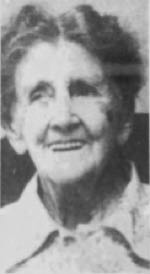
Mother Berry (Wikipedia.org)
This didn’t prevent the occasional determined female rider from slipping through the net though, with Australian native, Elizabeth Williams Berry, travelling to England and riding in competitive events disguised as a man on a number of occasions. Leaving little to chance with her alter ego of “Jack Williams”, Elizabeth threw herself into the role of an early 19th-century gent, regularly being spotted sporting a bowler hat and puffing a cigar.
Meriel Patricia Tufnell
It wasn’t until much later, in 1972, that a short series of 12 races was approved to be contested by female jockeys, with the first of these taking place at Kempton Park on 6th May 1972 and being won by Meriel Patricia Tufnell aboard Scorched Earth.
Hayley Turner & Cathy Gannon
From those relatively small-scale beginnings, progress was distinctly pedestrian on the female rider front, with only occasional highlights spotted here and there. The pace of progress then began to increase a little in the early years of the current century, sparked by the emergence of the excellent Hayley Turner, who jointly won the Champion Apprentice title in 2005, and Cathy Gannon who claimed the equivalent Irish honour one year earlier in 2004.
Timeline of Women in Racing
Going on to make their presence felt in the professional ranks, Gannon, and Turner in particular, were the initial headline-grabbers but other notable female riders and significant moments would soon follow:
- 2008 – Kirsty Milczarek becomes the first female jockey to ride a treble at a single meeting. Appropriately enough at Kempton Park, given that track’s historical significance to the emergence of women in the saddle back in 1972.
- 2008 – Hayley Turner becomes the first female jockey to ride 100 winners in a single season.
- 2010 – Katie Walsh and Nina Carberry finish first and second in the National Hunt Chase at the Cheltenham Festival.
- 2012 – Amy Ryan wins apprentice jockey’s title.
- 2015 – Lizzie Kelly becomes the first female jockey to win a Grade 1 race in Britain.
- 2016 – Josephine Gordon wins apprentice jockey’s title.
- 2017 – Rachel Blackmore becomes first female to win the Irish Conditional Jockeys Title.
- 2019 – Bryony Frost becomes first female to ride a Grade 1 winner at the Cheltenham Festival.
- 2021 – Rachael Blackmore becomes the first female rider to come home in front in the biggest one of them all, when steering Minella Times to victory in the Grand National at Aintree.
Racing: A Level Playing Field?
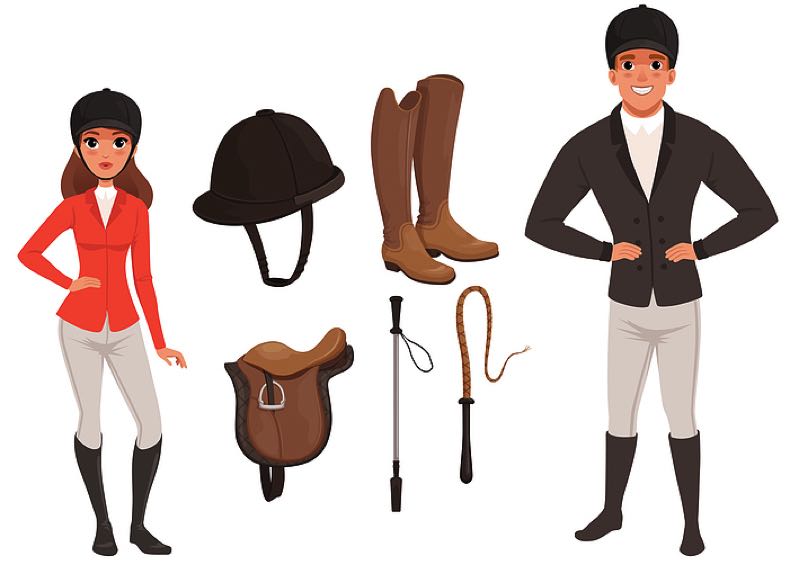
Given the achievements listed above, there can be little question that female jockeys are performing with considerable aplomb in the modern day, with the very best of the female riders proving to be a match for their male rivals. But is that fact, in and of itself, sufficient evidence to suggest that women as a whole aren’t at a disadvantage in a similar manner as witnessed in other sports?
This is a question that has provoked significant debate in recent years, with some suggesting racing is a perfectly even sport, whilst others argue that women are at a slight disadvantage.
Weight Plays a Factor
Given the requirement that jockeys must be light in order to ride at the low weights required of them, it could be argued that women hold the edge over men thanks to their naturally smaller stature. Certainly, at least on average, a woman should be more easily able to achieve the necessary racing weight without the need for endless fasting or sweating off excess pounds in saunas prior to a racing contest. Some theorise that by hitting this weight more naturally, women are in fact in a healthier state than many male riders, who may be below strength due to a fasting and wasting regimen.
Women Appear Just as Good
Data appears to exist in support of the argument that women are at least as good as their male counterparts. For instance, a study that was undertaken by the Thoroughbred Horseracing Industries MBA Program at the University of Liverpool found that the performance of female jockeys matches that of males.
Taking into consideration data collected over a 14-year period and factoring in a number of variables – most notably the abilities of the horses ridden by both the male and female riders – there would initially appear to be a good deal of substance to this study. That said, there are those within the industry who have questioned the merits of the findings due to the methods of statistical analysis used. Others, meanwhile, have suggested that many racing big-wigs were so quick to quote the findings – which certainly fit well with an all-inclusive narrative – that they did so before the study was even near its completion.
Or Do Men Hold the Edge?
Putting a precise value on the abilities of male and female jockeys is always likely to be an inexact science in a sport where it is generally accepted that at least 90% of race day performance is determined by the ability of the horses, rather than the men or women in the saddle. Despite the findings of the University of Liverpool study, and the results achieved by female riders at the highest level, a decent case can still be made that men do indeed hold the edge in the saddle – at least on average.
Muscle Mass an Advantage
For whilst it is true that having a small stature is an advantage in being able to comfortably make the required weight, it must be remembered that the task of a jockey is to remain in control of a one-tonne animal travelling at around 40mph. A task for which a degree of skill but also strength is required. When it comes to strength in humans, one of the key measures is that of muscle mass – a statistic in which, for better or worse, men come out ahead of women on average.
Taking the 18-35 age range as an example, the average muscle mass percentage of a woman is 31-33%, whereas for a man this rises to 40-44%. That’s a pretty significant disparity, suggesting that in a sport where small margins can make the difference, the additional strength of the male riders may on occasion prove decisive.
Of course, with this argument, there are numerous exceptions. No doubt many female jockeys are physically stronger than some male riders, but what is important to remember is that this theory does not refer to individual cases, but rather to the overall pool of female jockeys when compared to the overall pool of male riders. A point rather eloquently made by Kevin Blake in this At The Races discussion.
Females Are Outnumbered
The next question is then whether there is any evidence to suggest that this theorised male edge plays out in practice. Again, a reasonable case can be made that it does. For example, each year around 70% of the new applicants in the British Racing School are female, whilst over 30% of currently licenced apprentice jockeys in the UK are female riders.
However, these figures are failing to follow through and make any kind of consistent impact upon the upper echelons of the sport. For example, back in 2004, there were just two females on the list of Britain’s top 50 jockeys, fast forward to 2019 and that number still stood at just two. Why should this be the case?
Ingrained Bias or Physiology?
Some argue that these figures are due to an ingrained bias against female riders, resulting in the male jockeys more consistently being awarded rides on the better horses. Others, however, suggest that, just as in other sports, it is a slight difference in the physiology of the sexes which is the dominant factor, and that an allowance of some sort is required in order to level the playing field. But what kind of impact would such an allowance make? Previously we could only theorise, but thanks to a relatively recent change in French racing, we now have a decent amount of data available in order to look a little closer at this question.
The French Approach
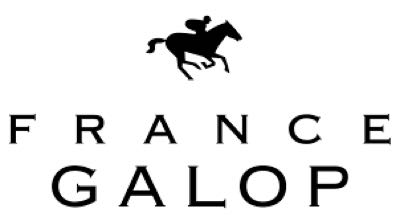 It was in 2017 that the French racing authority, France Galop, announced they would be introducing a 4.4lb (2kg) weight allowance, reduced to 3.3lb (1.5kg) in 2018, for all female riders, to be implemented in all events on the flat and over jumps – barring the top Graded or Group class contests which were exempt due to international rules. The stated aims of this initiative were to encourage French owners and trainers to use female riders in greater numbers.
It was in 2017 that the French racing authority, France Galop, announced they would be introducing a 4.4lb (2kg) weight allowance, reduced to 3.3lb (1.5kg) in 2018, for all female riders, to be implemented in all events on the flat and over jumps – barring the top Graded or Group class contests which were exempt due to international rules. The stated aims of this initiative were to encourage French owners and trainers to use female riders in greater numbers.
Decried by some as an insult to female jockeys in that it suggests they are less capable than their male rivals and in need of a helping hand, others complained that it was an unfair handicap against the male jockeys. Whatever the rights and wrongs, the effect upon results makes for very interesting reading.
Effect of Weight Allowance for Female Riders in French Racing
| Year | Female Weight Allowance | Strike Rate for All Jockeys | Male Jockey Strike Rate | Female Jockey Strike Rate | Difference |
|---|---|---|---|---|---|
| 2015 | 0 | 9.54% | 9.75% | 6.60% | 3.15% |
| 2016 | 0 | 9.44% | 9.61% | 6.84% | 2.77% |
| 2017 | 4.4lb | 9.52% | 9.66% | 8.33% | 1.33% |
| 2018 | 3.3lb | 9.59% | 9.78% | 9.03% | 0.75% |
| 2019 | 3.3lb | 9.36% | 9.78% | 7.95% | 1.83% |
As we can see from the above table, for whatever reason, the strike rate of female riders in the two years prior to the introduction of the weight allowance fell some way below that of male riders and that of the entire jockey population. Of course, the addition of a weight allowance was only ever likely to impact this strike rate in a positive direction, but the effect has still been pretty impressive, bringing the female jockey strike rate very close to that for all jockeys by 2018.
Advocates of the system will point to the data as evidence that this weight allowance is what has been needed all along in order to create a level playing field for male and female riders. Regardless of whether or not you concur with this view, what cannot be argued against is the fact that the introduction of the allowance has greatly increased the opportunities handed to women, as shown in the table below.
| Year | Female Rides | Total Rides | Female Rides as % of Total Rides | Female Wins as % of all Wins |
|---|---|---|---|---|
| 2015 | 3393 | 50725 | 6.69% | 4.63% |
| 2016 | 2997 | 50612 | 5.92% | 4.29% |
| 2017 | 5415 | 50038 | 10.82% | 9.47% |
| 2018 | 7743 | 49248 | 15.72% | 14.80% |
| 2019 | 4292 | 23879 | 15.30% | 12.80% |
Over the period in question that’s an improvement from a female jockey being handed the ride on around one in 16 horses, to one in 6 – an increase which has had a corresponding effect on the percentage of races won by female riders.
Is this improvement solely down to the weight allowance cancelling a physical disadvantage? Or has the allowance merely incentivised trainers and owners to use a female jockey on a better class of runner than may previously have been the case? In all likelihood, it will prove to be some mixture of these two factors, but regardless, the introduction of the allowance can surely only be viewed as a positive for female riders overall. In 2016 the number of female jockeys in the French top 50 stood at zero, but by 2018 this had risen to a far healthier seven – coming very close to the percentage represented by the total number of rides obtained by female jockeys.
Impressive at first glance, the system is yet to gain much traction on an international scale. The Japan Racing Association have since brought in a similar weight allowance structure, but whether other nations – including Britain and Ireland – follow suit, remains to be seen.
One Rule for the Horses
As a slight aside, one interesting point to note within the sport of racing is that sex-related weight allowances are in fact already accepted and have been for many years – only in relation to the equine rather than the human participants.
When competing against colts and geldings, fillies and mares receive a weight allowance, even in the very top events, in order to compensate for their strength and size disadvantages. Of course, the most talented fillies and mares make this allowance look slightly ridiculous, but when taken in the context of ALL male and female runners, it is generally accepted that the process creates as even a playing field as possible.
Top Female Jockeys
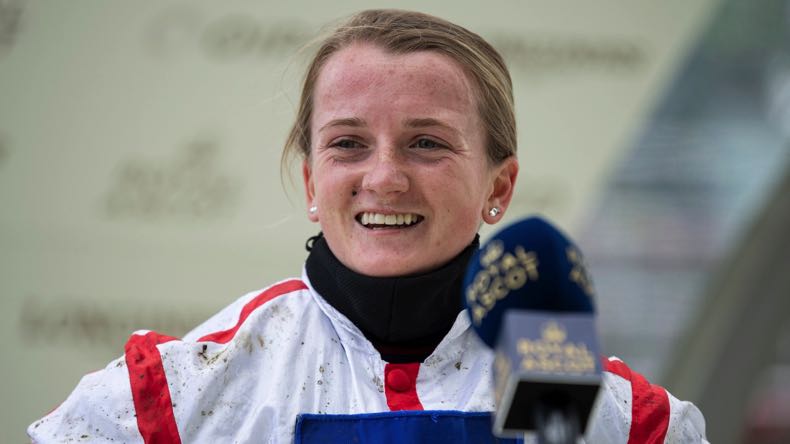
Hollie Doyle (Leslie Blue7 / Wikipedia.org)
The debate as to whether women should or should not receive a weight allowance seems likely to rumble on, but what we already do know for sure is that, at their best, female jockeys are more than a match for the men in the saddle, possessing the talent to make their presence felt on the biggest stages. Handing a weight advantage to any of this lot would most likely be very unfair to any male rider coming up against them.
Hayley Turner
The woman who really kick-started the modern era of female riders, and for many still the best female jockey Britain has ever produced. A winner of over 850 contests throughout her career, highlights include becoming the first woman to ride a Group 1 winner in Britain aboard Dream Ahead in the 2011 July Cup, and a major international success when partnering I’m A Dreamer in the Grade 1 Beverly D. Stakes in the US in 2012.
Rachael Blackmore
If Hayley Turner is the greatest ever female flat jockey, a strong case can be made that it is County Tipperary native, Rachael Blackmore, who is the most talented woman to ever take to the National Hunt saddle. Bursting onto the scene with a double at the 2019 Cheltenham Festival, by 2021 Blackmore had already amassed a total of nine Cheltenham triumphs – winning the top jockey award at the meeting in 2021. And, still not done, Blackmore tore up the history books to become the first female jockey to ever win the Grand National later that year.
Bryony Frost
Beloved by many racing fans for her endearingly bubbly personality, and clear love for the horses she partners, it shouldn’t be forgotten just what a talented rider Devon-born Bryony Frost is. Hitting the headlines with success in the 2017 Foxhunter Chase for amateur riders at the Cheltenham Festival, Bryony has proven equally adept in the professional ranks, most notably with her beloved Frodon – aboard whom she won the Ryanair Chase, the Ladbrokes Champion Chase and the King George VI Chase.
Nina Carberry
As of 2022, the now-retired Nina Carberry still stands as the female rider with the most wins in the National Hunt sphere – racking up a total of 417 success throughout her career as an amateur, including seven victories at the Cheltenham Festival and a win aboard Organisedconfusion in the Irish Grand National of 2011 – becoming just the second female rider to land that prize.
Hollie Doyle
Last but not least, the modern darling of the flat racing game – Hollie Doyle. Catching the eye when racking up impressive numbers in 2017, by 2019 Doyle had set a new single-season wins record for a female jockey with a tally of 116 triumphs, only to go on to smash that record when registering 151 successes in 2020 – an achievement which was recognised with her third-place finish in the 2020 British Sports Personality of the year award.
Top Female Trainers
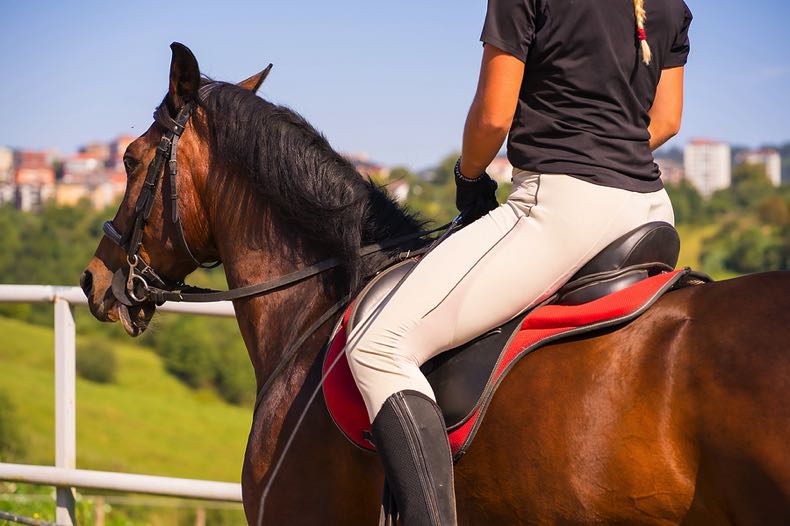
Whilst the debate surrounding the perceived advantages of male jockeys over females has a decent set of arguments both for and against, it isn’t all about the riders when it comes to female participation within the sport.
There is another area that sees the women compete with the men on what is an undoubtedly even playing field – that of the training of racehorses. Much like the riders, a number of female trainers have made a big splash over the years. None more so than the following five.
Jenny Pitman
One of the real trailblazers amongst female trainers, Jennifer Susan Pitman, began her training career living out of an unheated caravan – complete with a young family in tow. But wasn’t long before she was able to leave those conditions behind. Becoming the first female to ever train the winner of the Grand National when saddling Corbiere to victory in 1983, she later proved that to be no fluke when repeating the trick with Royal Athlete in 1995. Also a dual winner of the Cheltenham Gold Cup, with Burrough Hill Lad in 1984 and Garrison Savanah in 1991, she fully deserves her place on the list of female racing greats.
Venetia Williams
Forced to curtail a career in the saddle due to the not inconsiderable injury of a broken neck, Venetia didn’t let that inconvenience prevent her from making her presence felt in the racing world. Starting with just six horses in 1995, within three years she was competing in the top-level Cheltenham events, and saddling Teeton Mill to glory in both the Hennessy Gold Cup and the King George VI Chase. Also successful in the 2009 Grand National with Mon Mome, as of 2022 she has recorded more National Hunt wins than any other female trainer.
Henrietta Knight
Another shining light of the National Hunt game throughout her career was the blue-blooded Oxford graduate, Henrietta Knight. Initially starting in the point-to-point sphere, the former event rider first took out a professional licence in 1989. And it proved to be a successful endeavour, with over 25 major race wins, including three Cheltenham Gold Cup triumphs by the horse with whom she will forever be associated – Best Mate.
Lucinda Russell
Partner of the eight-time Champion National Hunt Jockey, Peter Scudamore, Edinburgh-born Russell is at the helm of one of the most successful Scottish-based National Hunt yards in the history of the sport. Racking up well over 900 winners as of 2022, major successes have included that of Brindisi Breeze at the 2013 Cheltenham Festival and, most famously of all, when saddling One For Arthur to glory in the 2017 Grand National – a result which no doubt contributed to her being awarded the honour of OBE in 2018.
Jessica Harrington
Whilst the four previous names have achieved their success almost exclusively within the domain of National Hunt racing, our final entry has proven she has what it takes to train winners at the highest level no matter what the code. Born in London but based in Ireland, Harrington’s remarkable career has featured wins in the Cheltenham Gold Cup, the Champion Hurdle and the Queen Mother Champion Chase over the jumps, in addition to multiple Group 1 successes on the flat, including victories in the Coronation Stakes and the Cheveley Park Stakes. When it comes to dual-purpose female trainers, Harrington surely has strong claims to be the greatest of all time.
